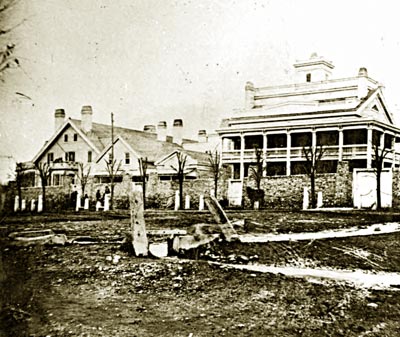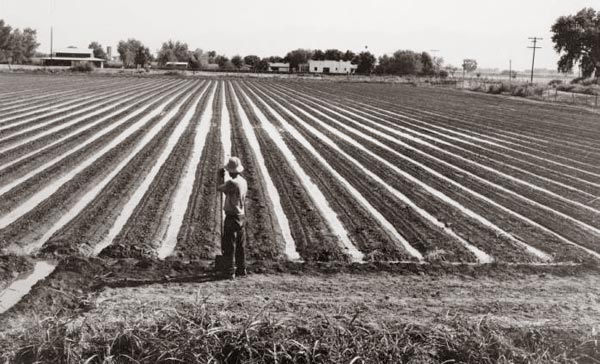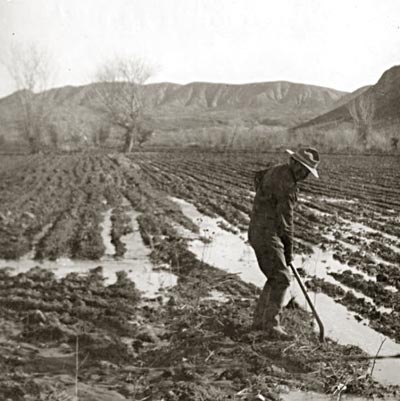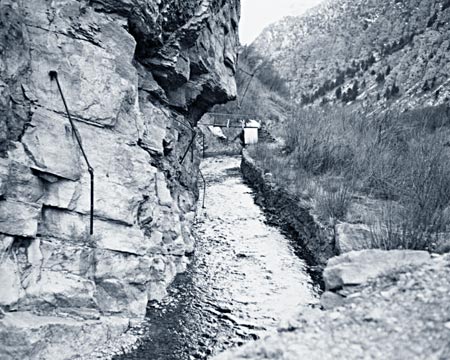You can think of a few uses, right? But here are some ways people used water in the past that you might not have thought of.
Mills
Mills powered by creeks sawed lumber, ground grain, and produced sorghum—giving settlers housing and food. The first group of settlers in Parowan brought the makings of a sawmill with them and put it on Center Creek in 1851.

Electricity
People in Iron County built hydroelectric plants on Center Creek and Coal Creek, and were getting electricity from water power by 1906.
Ice
Harry Hunter of Cedar City was an “ice man.” He built a pond near Coal Creek. He would flood the pond with water near the creek and in the winter would cut big ice blocks, using a sharp plow pulled by horses to groove the ice. He would then split the ice into blocks. He stored the blocks in his barn, covered with sawdust. In the summer, he would deliver the ice to houses using a wagon.
Irrigation

As you’ve already learned, for thousands of years farmers all over the world have used irrigation—diverting water from streams and rivers to water their fields. The Ancestral Puebloan peoples in the Four Corners region irrigated crops. So, too, did Mormon settlers in the 19th century. Irrigation is still used today around the state.
Euro American settlement in Utah relied heavily on irrigation. In the Salt Lake Valley Mormon settlers dammed the creeks and dug ditches so that water would soften the soil for crops. Farming and little communities spread out over the valley.

Settlers also established communities in other places where they could use stream water to irrigate crops. The first communities in Utah were in places where it was easier to irrigate–in valleys where streams flowed from nearby mountains.
In the early years, all of a town’s water might come from the irrigation ditch. In St. George, the city had a rule that first thing in the morning, families could fill their barrels with ditch water for the day. (In the summer, they had to wrap the barrels with wet blankets to keep the water cool.)
Next, the cows would drink from the ditches on their way to the community grazing spot.(Ew. Would you want to drink the water after that?)
For the rest of the day, people took their water “turns” to water their gardens and farms.
Irrigating is difficult work!
Irrigation was easier in the northern part of the state. Why?

- Lots of mountain streams and rivers.
- Snow that melted and filled the streams well into the summer.
- Decent soil.
Southern Utah wasn’t so lucky.
- The soil was often sandy.
- The streams were unpredictable—sometimes dry, sometimes raging.
- The ditches would fill up with silt (from the sandy soil).
- Floods would wash out the diversion dams.
People in the little town of Giles, in Wayne County, kept trying to build a dam on the Fremont River so they could get water into the irrigation ditches and onto their crops. Time and time again, huge flash floods washed away the dam. Sometimes the floods carried away their fields too. The people just couldn’t make the Fremont River behave. There’s a reason why you can’t find Giles on a map today!
Keep Exploring!